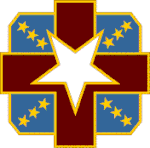The Special Warfare Memorial Statue
1968 sculptures1969 establishments in North CarolinaBronze sculptures in North CarolinaBuildings and structures in Fayetteville, North CarolinaMonuments and memorials in North Carolina ... and 4 more
Outdoor sculptures in North CarolinaSculptures of men in North CarolinaStatues in North CarolinaVietnam War monuments and memorials in the United States

The Special Warfare Memorial Statue — known informally as Bronze Bruce — was the first memorial in the United States to soldiers who had served in the Vietnam War. It was created in 1968 by sculptor Donald De Lue (1897–1988) and dedicated on November 19, 1969. The statue is the centerpiece of the U.S. Army Special Operations Command's Memorial Plaza at Fort Liberty, North Carolina, which honors all Army special operations soldiers. The statue depicts a Special Forces soldier as most all of the Army special operations soldiers killed in Vietnam were SF.
Excerpt from the Wikipedia article The Special Warfare Memorial Statue (License: CC BY-SA 3.0, Authors, Images).The Special Warfare Memorial Statue
Kuwait Street,
Geographical coordinates (GPS) Address Nearby Places Show on map
Geographical coordinates (GPS)
| Latitude | Longitude |
|---|---|
| N 35.109962 ° | E -79.002491 ° |
Address
Kuwait Street
Kuwait Street
28310
North Carolina, United States
Open on Google Maps








